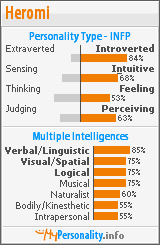A successful business models effectively addresses eight key elements:
• Value proposition-how a company’s product or services fulfills the needs of customer. Typical e-commerce value propositions include personalization, customization, convenience, and reduction of product search and price delivery costs.
• Revenue models-how the company plan to make money from its operations. Major e-commerce revenue models include the advertising models, subsciption model, transaction fee model, sales model, and affiliate model.
• Market opportunity-the revenue potential within a company’s intended marketspace.
• Competitive environment-the direct and indirect competitors doing business in the same marketspace, including how many there are and how profitable they are.
• Competitive advantage-the factors that differentiate the business from its competition, enabling it to provide a superior product at a lower cost.
• Market strategy-the plan a company develops that outlines how it will enter a market and attract customers.
• Organizational development- the process of defining all the functions within a business and the skills necessary to perform each job, as well as the process of recruiting and hiring strong employees.
• Management team-the group of individuals retained to guide the company’s growth and expansion.
Decribe the major B2C business models.
• Portal-offers powerfull search tools plus an integrated package of content and services; typically utilizes a combined subscription/advertising revenue/transaction fee model; may be general or specialized (vortal).
• E-tailer-online version of traditional retailer; includes virtual merchants (online retail store only), clicks-and-mortar e-tailers (online distribution channel for a company that also has physical stores); catalog merchants (online version of direct mail catalog); manufacturers selling directly over the Web.
• Content provider-information and entertainment companies that provide digital content over the Web; typically utilizes an advertising, subscription, or affiliate referral fee revenue model.
• Transaction broker-processes online sales transactions; typically utilizes a transaction fee revenue model.
• Market creator-uses Internet technology to create markets that bring buyers and sellers together; typically utilizes a transaction fee revenue model.
• Services provider-offers services online.
• Community provider- provides an online community of like-minded individuals for networking and information sharing; revenue is generated by referral fees, advertising, and subscriptions.
Decribe the major B2B business models.
The major business models used to date in the B2B arena include:
• E-distributor-suplies products directly to individual businesses.
• E-procurement-single firms create digital marketplaces for direct inputs, usually for a vertical industry group.
• Industry consortia-industry-owned vertical industry group.
• Single-firm networks-company-owned private industrial networks to coordinate supply chains with a limited set of partners.
• Industry-wide networks- industry owned private industrial networks to set standars, coordinate supply and logistics for an industry.
Recognize business models in other emerging areas of e-commerce.
A variety of business models can be found in the consumer-to-consumer e-commerce, peer-to-peer e-commerce areas:
• C2C business models connect consumers with other consumers. The most successful has been the market creator business model used by eBay.com and Half.com.
• P2P business models enable consumers to share files and services via the Web without common servers. A challenge has been finding a revenue model that works.
• M-commerce business models take traditional e-commerce models and leverage emerging wireless technologies to permit mobile access to the Web.
• E-commerce enablers’ business models focus on providing the infrastructure necessary for e-commerce companies to exist, grow, and posper.
Understand key business concepts and strategies applicable to e-commerce.
The Internet and the Web have had a major impact on the business environment in last decade, and has affected:
• Industry structure-the nature of players in an industry and their relative bargaining power-by changing the basic of competition among rivals, the barriers to entry, the threat of new substitute products, the strenght of suppliers, and the bargaining power of buyers.
• Industry value chains-the set of activities performed in an industry by suppliers, manufacturers, transporters, distributors and retailers that transforms raw inputs into final products and services-by reducing the cost of information and other trensaction costs.
• Firm value chains-the set of activities performed within an individual firm to create final products from raw inputs-by increasing operational efficiency.
• Business strategy-a set of plans for achieving superior long-term returns on the capital invested in a firm-by offering unique ways to differentiate products, obtain cost advantages, compete globally, or compete in narrow market or product segment.
Subscribe to:
Post Comments (Atom)



No comments:
Post a Comment